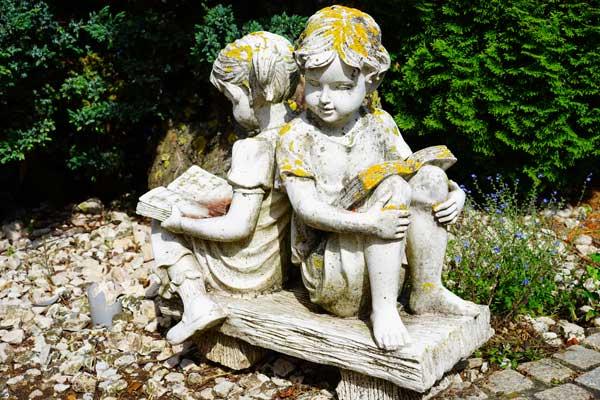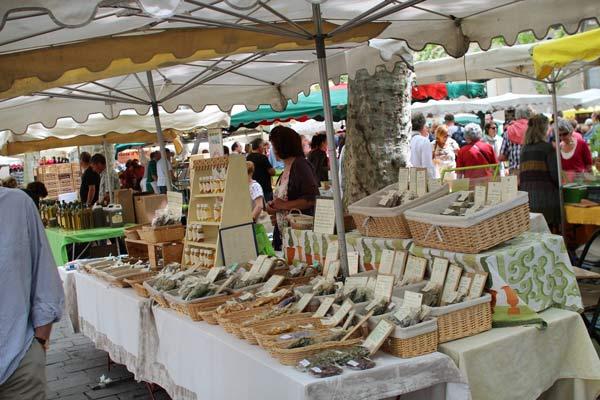Was she hiding something and what else don’t we know?
 Your average Dupont doesn’t know much about France’s national heroine ... except that she was “burnt by the English”. This ignorance is understandable since, although thousands of books and dozens of plays and films have been devoted to her, what we really know about is her career as a mythical figure rather than as a real human being.
Your average Dupont doesn’t know much about France’s national heroine ... except that she was “burnt by the English”. This ignorance is understandable since, although thousands of books and dozens of plays and films have been devoted to her, what we really know about is her career as a mythical figure rather than as a real human being.So what are the basic facts? Jeanne, as she’s known in France, of course, was born in 1412, on a date that’s uncertain but is traditionally held to be January 6th, into a peasant family in the Vosges village of Domrémy. Against all likelihood, at just seventeen she emerged as a leader of resistance to the English invader of the time. She claimed to have heard angelic voices over several years previously urging her to take on such a role (she had the additional motivation that English soldiers had raped her sister). As the story goes, she dynamized the wimpish King Charles VII and then, clad in armour, led his troops to victory. Her triumph, however, was short-lived. Someone betrayed her on her own side and sold her to the English. She was imprisoned and then put on trial as a witch who had “completely abandoned the decency and reserve of her sex”. Found guilty, she was burnt alive in front of the Rouen cathedral in 1431.
From late developing adolescent to Gallic icon
How reliable are those “basic facts”? Certainly, there’s evidence that a teenage girl – even if un garçon manqué (“tomboy”) – did play a part in the battle with the English. Details, however, are obscure: what were the circumstances of her “sale” to the enemy, for example? We may have, though, some idea of what she looked like. During her trial a court official made a sketch of the accused girl, which has survived. Unsurprisingly, she doesn’t look very feminine. On screen she’s usually been portrayed by attractive women – Sandrine Bonnaire and Imogen Stubbs, to mention a couple – but last year’s Clémence Poésy, at best une jolie-laide, in Jeanne Captive was likely closer to the reality. As to her character and behaviour these remain enigmatic. All we have to go on is that she heard those voices telling her to take up arms ... and to avoid sex.
At the time her accusers put the angelic messages down to witchcraft. More recently many other explanations have been advanced. Typically, Dr Lydia Bayne of the University of California-San Francisco concluded that Jeanne was “an epileptic given to partial complex seizures, marked by trance-like states and hearing voices”, the latter often provoked by “rhythmic sounds” (Jeanne often mentioned hearing church bells). More fancifully, a French doctor has offered the view that she was actually a man with “a hormonal disorder” and “hidden testicles” (she certainly had balls). In a recent paper the historian Colette Beaune argues that Jeanne was simply “a late developing adolescent” (a common condition in pre-modern Europe) who fantasised about virginity because she had no experience of the alternative. There’s much more speculation of this kind, all of it unverifiable.
On the other hand, there’s a mass of evidence about Jeanne’s later career as a Gallic icon. Although she was formally rehabilitated by the French Church before the end of the 15th century – after all, she was seen as a victim of the English – she was virtually forgotten for centuries, except for occasional dismissive asides (for Voltaire she was just “an unlucky idiot”). Change came in the mid-19th century as part of a continuing effort to strengthen and consolidate French national identity. Very soon she became the focus of competing claims and enthusiasms among different groups, although Catholics and socialists even joined forces to lobby for her canonisation. The situation during the Second World War was especially interesting. The collaborationist Petain regime put up posters showing Jeanne at the stake with RAF bombers flying above her and the legend “the criminal always returns to the scene of the crime”. At the same time both Charles de Gaulle and the underground communist party adopted her as a symbol of resistance to the Nazis.
Colour her whatever way you like
Within today’s politics the attempt to take over la Pucelle, as she’s known, continues. Partly this has been provoked by the claim of the Le Pens’ National Front that she is exclusively theirs. Objection has come from all sides. François Mitterrand called for “vigilance and unity” in the name of Jeanne, while Ségolène Royal has declared her “loyalty to this daughter of the people”. Back in January Nicolas Sarkozy was in Domrémy for the birthday celebrations, insisting that “she belongs to the whole of France, not to one party or group”. But the French had better watch out: the Japanese have been eyeing “Jann d’Arc” for years, hailing her as “the first of the women samurai, and even giving her the leading role in a typically violent video game”. And why not? As historian Nicolas Offenstadt has put it, “She’s very useful ... You can colour her whatever way you like.”

















